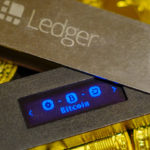Stablecoins: what are they and what do they do?

Currently, leading cryptocurrencies such as bitcoin and ether continue to be characterized by significant volatility. As a result, the use of —and investment in— these currencies continue to be confined to a financial realm of high risk, which is short on guarantees. In this context, these blockchain-associated financial instruments are in a constant state of evolution; the goal is to identify solutions to the challenges still facing the technology. Stablecoins have emerged as the output of recent efforts to reduce virtual currency volatility.
This new type of cryptocurrency is based on tokens that are pegged to the value of a fiat currency (like the dollar or the euro), to material assets like gold or property, or to another cryptocurrency. There are also stablecoins that are not linked to other currencies, but are rather controlled by algorithms to keep their prices stable. The principal reason for creating a stablecoin is to protect investors in times of volatility.
Types of stablecoins
There are two distinct types of stablecoins that use different strategies to reduce volatility: firstly, there are the “collateralized” (or “backed”) cryptocurrencies, which are tied to an external value (whether it be a fiat currency, another cryptocurrency, or assets), which, in theory, provides stability.
Within this first group, we find three categories:
- Fiat-backed
Both Tether and TrueCoin fall into this category. They are backed by the U.S. dollar and are managed by several companies acting as a central institution. Tether is one of the greatest success cases: built in 2014 on open blockchain technology, it currently stands at a value close to $2.6 billion.
To use it, customers access its platform to exchange U.S. dollars for company tokens, called USDT, which can be used like any other cryptocurrency, whether in exchange for goods on the digital platforms that accept them or as an investment. The company claims that it has sufficient dollars “in reserve” that act as a deposit guarantee for the platform's customers. The idea is that customers should be able to return their USDT for dollars whenever they choose, without being impacted by pricing fluctuations typical of other cryptocurrencies, because USDTs are virtually “tethered” to the dollar.
Nonetheless, uncertainty about the company has been raised because there is no concrete proof that they have the enough dollars to cover the token supply that is now in circulation: some 2 billion.
- Cryptocurrency-backed
The most controversial stablecoins fall within this category because they use other cryptocurrencies to keep their value stable. Different mechanisms are used to achieve this.
An example is DAI, a cryptocurrency that uses the Etherum platform and the value of the ether to keep its cryptocurrency “pegged” to the dollar. In this case, users don't buy the DAI cryptocurrency directly; instead, they “generate” it in exchange for ethers, which are exchanged in the platform by way of a deposit. The stablecoin avoids volatility caused by ether fluctuations because users are required to deposit more ethers than necessary. This mechanism is called overcollateralization and involves providing excess collateral in exchange for funding in order to reduce the risk. This is how users would be able to “protect themselves” from a possible drop in the cryptocurrency value.
- Asset-backed (gold, property, etc.)
In these models, the cryptocurrency pegs its value to an external good like gold in order to keep its value stable. G-Coin is such a case. It is a token-based platform where each token equates to one gram of physical gold. The company asserts that the gold that backs the tokens is safely stored, and they use blockchain to ensure that the metal comes from conflict-free zones. According to the company, their tokens can be exchanged for physical gold, can be used as a store of value, or can be used like other cryptocurrencies to make digital payments.
Controlled by algorithms
The second main group of stablecoins are those that are “non-collateralized” or non-backed, meaning they are not linked to any external value, rather they exclusively use algorithms to avoid price fluctuations. In these models, it is the blockchain itself that controls currency volatility by using algorithms and smart contracts.
An example from this group is USDX, which uses algorithms to keep the price of the token pegged to the dollar to control its stability. In this model, the system is decentralized because it is governed by smart contracts.
Basecoin, on the other hand, provides proof that cryptocurrencies are not yet compatible with certain government regulations. Its stablecoin, called basis, relied on both smart contracts and a set of algorithms that replicated the central bank's monetary policy. But, on December 13th the founders were forced to announce the end of their venture, returning $133 million of raised capital to investors, because they were aware that they would not be able to overcome the significant obstacles presented by U.S. regulation.
By the sight of it, stablecoins are still in an incipient stage, and therefore not a sufficiently secure investment vehicle. Still, with time and the refinement of the different models, they could end up raising more capital than currently represented by bitcoin or ripple.